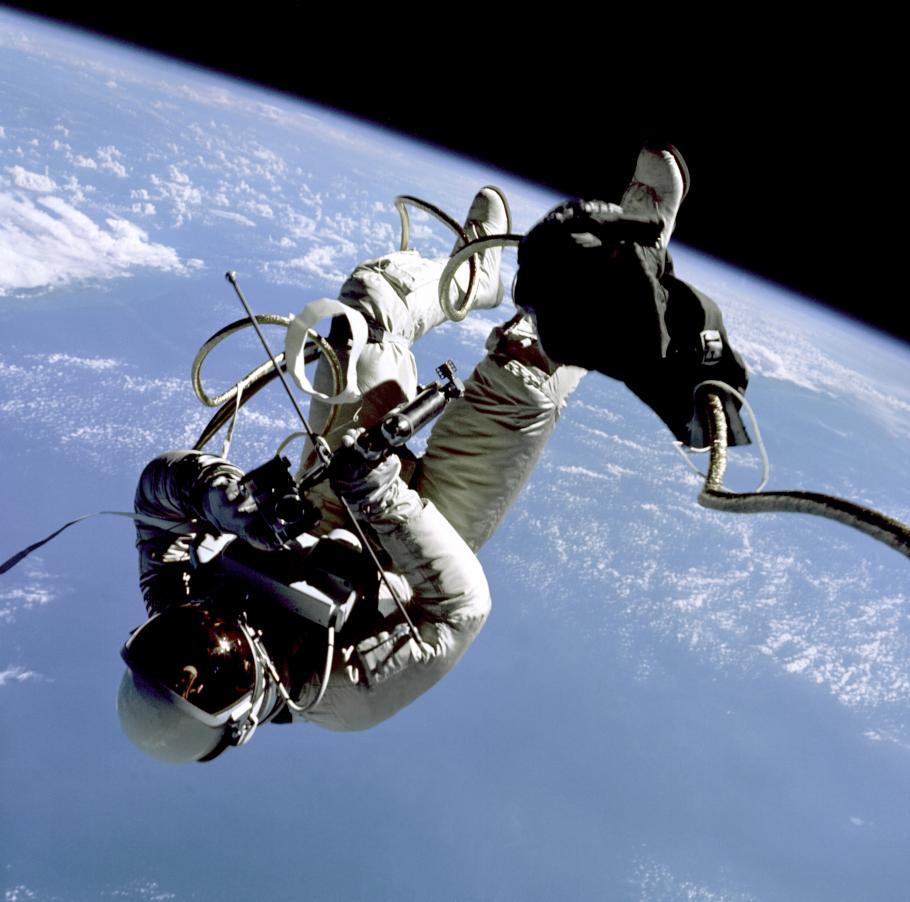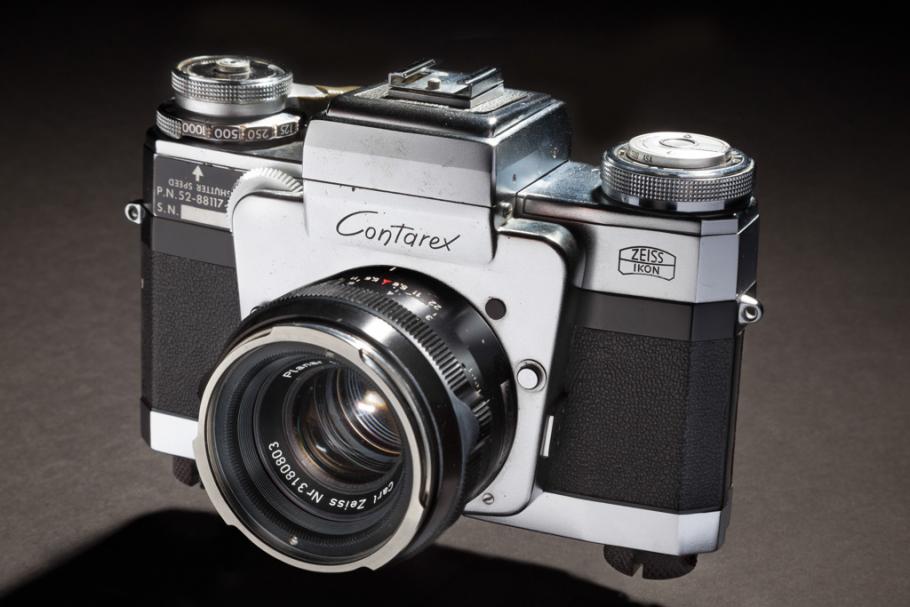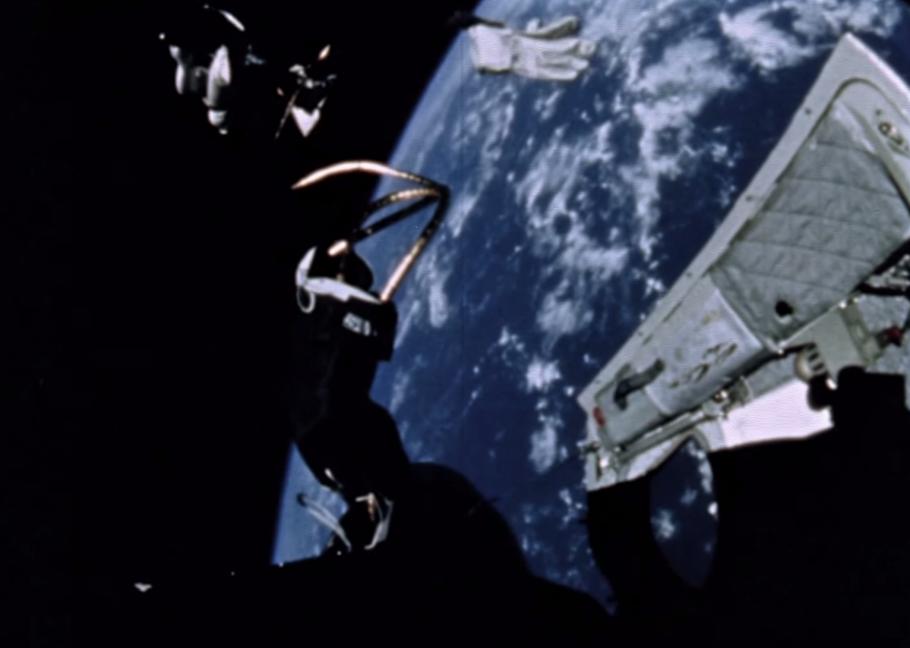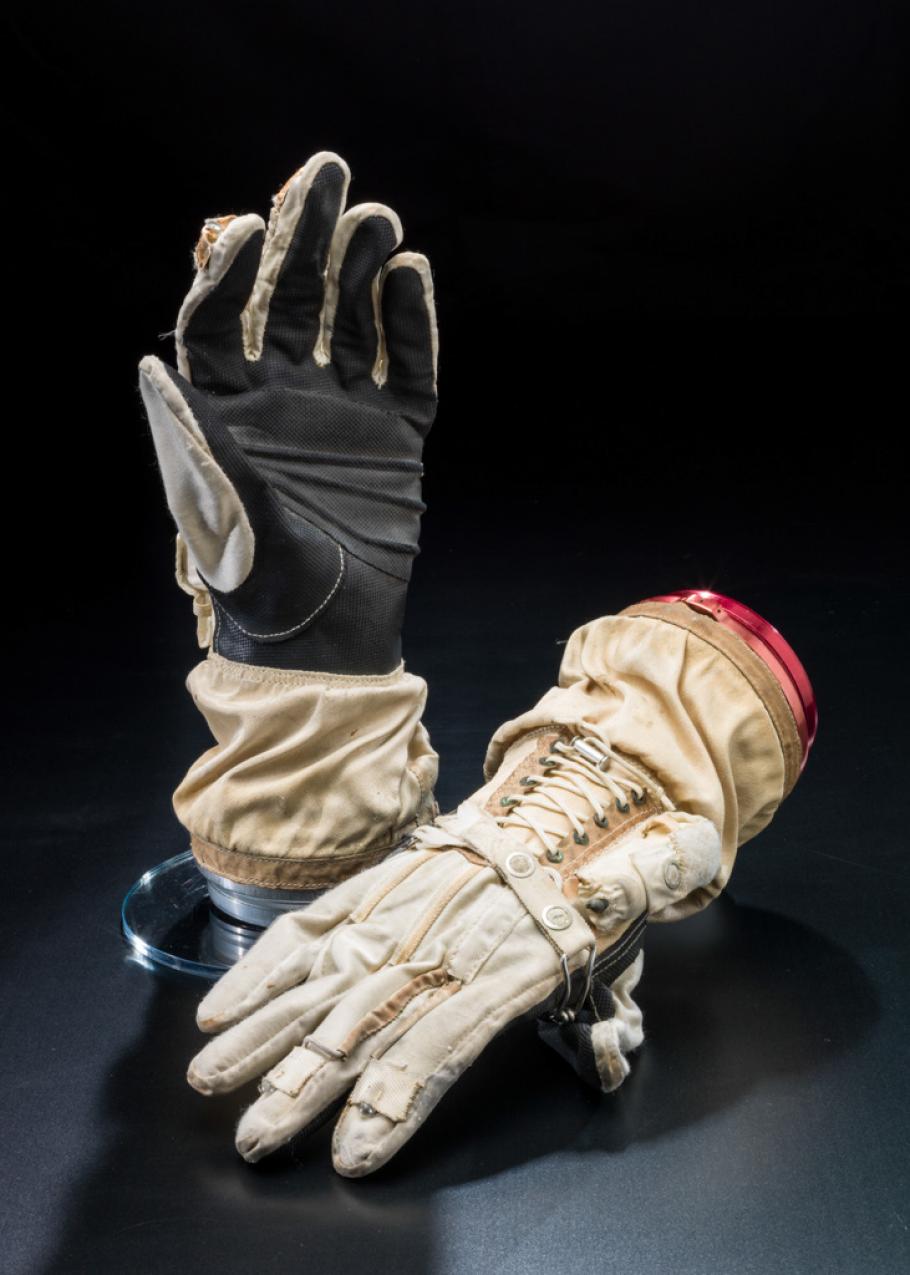The first spacewalk by an American, which took place June 3, 1965, marked a new chapter in human exploration of space. Images of Edward White II floating in space with the backdrop of a beautiful blue and white Earth spread a sense of wonder around the world – humans could actually go to this place and it was amazing. While the spacewalk (or EVA, which stands for extra-vehicular activity) lasted less than 20 minutes, its significance for the future of human spaceflight in the American context cannot be underestimated. This was the start of how we understood human activity in the setting of space, and like a child, these first tentative and careful steps led to decades of new capabilities. Working in the vacuum of space, however, took years to make efficient and was dependent on the creation of tools like handholds, better gloves, and specially adapted equipment that would make building and maintaining vehicles possible.
During the five-month long exhibition Outside the Spacecraft: 50 Years of Extra-Vehicular Activity, I have awaited this last week of activity as (sadly) the end of a very successful exhibition, but also the moment we get to mark the anniversary of White’s spacewalk during the Gemini IV mission. Visitors to the Museum in DC now have a rare opportunity to see the capsule uncovered (without Plexiglass) while we renovate the Boeing Milestones of Flight Hall. For our visitors online, I wanted to share a few interesting facts about Gemini IV, its crew, and that game-changing spacewalk.
1. Commander James McDivitt and Ed White became fast friends during their time in the Aeronautical Engineering program at the University of Michigan, which they both graduated from in 1959. They both moved on after graduation to the test pilot school at Edwards Air Force Base, frequently flying together. This made them uniquely compatible for the second Gemini mission.
2. McDivitt and White were members of the “New Nine” class of astronauts, the second ever selected, and were both rookies. Their backup crew consisted of fellow “New Nine” classmates, and future Gemini VII crew members, Frank Borman and James Lovell.
3. McDivitt discovered a potential problem with the spacecraft hatch during a vacuum chamber test when a spring failed to compress correctly. Having studied the mechanism, he was well prepared with a work-around during the flight when the spring caused trouble during the opening and closing of the hatch for the spacewalk
4. Communication circuits between the astronauts and the ground malfunctioned during the EVA, leading to the need for McDivitt to relay all ground communications to White. This was particularly complicated when mission control wanted White to return to the spacecraft and the faulty circuits, and two exuberant astronauts, delayed the end of the spacewalk.
Edward H. White II, pilot of the Gemini 4 spacecraft, floats in the zero gravity of space with an Earth limb backdrop. The extravehicular activity was performed during the third revolution of the Gemini 4 spacecraft and represents the first time an American has stepped outside the confines of his spacecraft. White is attached to the spacecraft by a 25-ft. umbilical line and a 23-ft. tether line, both wrapped in gold tape to form one cord. In his right hand White carries a Hand-Held Self-Maneuvering Unit (HHSMU). The visor of his helmet is gold plated to protect him from the unfiltered rays of the sun.
5. For reasons I can only speculate about, the camera attached to the top of White’s maneuvering unit, a Zeiss Contarex, is owned by the National Museum of the U.S. Air Force, but the lens is in the Museum’s collection. My suspicion is that because the “zip gun,” as the maneuvering unit was called, was a contract through the Air Force, they likely supplied the camera as well. It was later transferred to their own museum, while the lens, presumably supplied by NASA, passed to the National Air and Space Museum with other Gemini IV equipment.
This 35mm camera and lens were attached to the top of Ed White's maneuvering unit during his spacewalk for Gemini IV.
6. The thermal gloves seen covering White’s hands in photographs were important to keeping his hands warm, but one snuck out of the hatch before the astronauts got it closed.
A film clip from Ed White's spacewalk, the first for an American.
7. The spacesuit’s pressure gloves, underneath the thermal gloves during EVA, were designed with the clever feature of fingertip lights, which White could activate with a small button in order to see cabin controls better during the 45 minutes of dark on each orbit.
Ed White's Gemini IV mission gloves.
Despite the accomplishments and lessons learned during Gemini IV, the success became somewhat bittersweet at NASA. White would lose his life just 18 months later when a fire started in the command module during a launch pad test for the first Apollo mission. McDivitt went on to command Apollo 9, the first test of the lunar module. The accomplishments and experiences of McDivitt and White during their Gemini IV mission, however, are more than just the story of a spaceflight. They illuminate for us the earliest moments of how we think about human work in space, the quick thinking it takes to overcome obstacles in low and zero gravity environments, and the teamwork needed to make space exploration a success.



